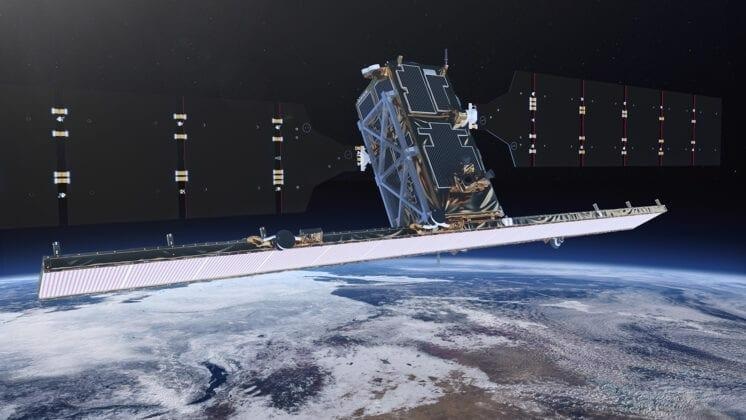Apr 26 2021
Under the guidance of Curtin University, a new study has demonstrated how radar satellites can enhance the potential to detect, track, prepare for, and resist natural disasters in Australia, such as earthquakes, floods, and bushfires.
 Curtin researchers used SAR data obtained by the European Space Agency Sentinel-1 satellite. Image Credit: European Space Agency.
Curtin researchers used SAR data obtained by the European Space Agency Sentinel-1 satellite. Image Credit: European Space Agency.
The study made use of Synthetic Aperture Radar data acquired by the European Space Agency Sentinel-1 satellite, besides others, to assess Australia-specific case studies.
According to Dr Amy Parker, lead researcher of the study and an ARC Research Fellow from Curtin’s School of Earth and Planetary Sciences, the Sentinel-1 satellite mission offered the first-ever comprehensive global Synthetic Aperture Radar (SAR) dataset and the first chance to make use of data of this kind to evaluate risks in new locations, including Australia.
What makes SAR so valuable is that it provides all-weather and night-and-day capability to remotely monitor the Earth’s surface, unlike traditional optical Earth Observation (EO) imagery which is at the mercy of cloud, fog, rainfall and smoke.
Dr Amy Parker, Study Lead Researcher and ARC Research Fellow, School of Earth and Planetary Sciences, Curtin University
“SAR data can be used to precisely map topography, track movements of the ground surface, characterize land-use change, and map damage to infrastructure, all of which can significantly improve how we track and respond to natural disasters. But despite SAR satellites being well-documented as a hazard monitoring tool, the uptake of such data varies, and in Australia the use of SAR data has been limited,” added Dr Parker.
The study involved applying SAR data to nine case studies that cover severe problems like earthquakes, floods, and bushfires to evaluate the power of SAR as a disaster mitigation and prevention tool.
For example we looked at the 2016 Wildman Coastal Plains Floods in the Northern Territory and found that SAR has added benefits in mapping flood patterns and floodplain dynamics.
Dr Amy Parker, Study Lead Researcher and ARC Research Fellow, School of Earth and Planetary Sciences, Curtin University
Dr Parker noted that these advantages can also be used to ensure mine site safety and to gain better insights into seismic hazards and activity.
Globally, Australia is one of the largest users of Earth observation data derived from satellites, which contributes to national hazard monitoring and response and more than 100 state and federal government programs. Our research shows SAR data can effectively complement this.
Dr Amy Parker, Study Lead Researcher and ARC Research Fellow, School of Earth and Planetary Sciences, Curtin University
“Previously SAR data has been considered too expensive to use as a tool for hazard mitigation, but our findings show, through Sentinel-1 we now have economically viable wall-to-wall, consistent sensor imaging of Australia,” continued Dr Parker.
“The uptake of SAR data for hazard applications globally will continue to benefit from validated case studies such as ours, the development of tools that support operational use, and the continued provision of open-access imagery by large-scale satellite missions,” concluded Dr Parker.
Journal Reference:
Parker, A. L., et al. (2021) Applications of Satellite Radar Imagery for Hazard Monitoring: Insights from Australia. Remote Sensing. doi.org/10.3390/rs13081422.